Windy City flutters many flags
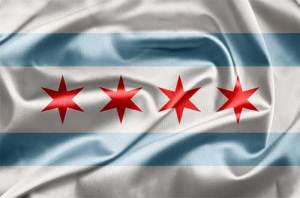
Chicago is known as the Windy City, and its unique history of flags – from a poet who was intensely interested in them to a football stadium that honors veterans – has given those breezes plenty of cloth to play with.
The poet, Wallace Rice, was born in 1860, the year another Illinois resident, Abraham Lincoln, was elected president. Rice would live until 1939, when Nazi Germany invaded Poland. Over that long span, he wrote poetry, some of it about flags, and designed two significant banners.
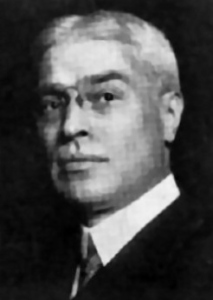
One of his poems is titled “The Flag with Fifteen Stripes.” Written in 1898, it includes this refrain: “Hurrah! The boatswain pipes/the tune to the tars/under Forty-five Stars,/of the Flag with Fifteen Stripes!” The reference is to the original Star-Spangled Banner, which had 15 stripes.
Fascinated by flags and involved in vexillology, Rice created two of the most famous banners in Illinois history, both in 1917. One was the official flag of the Illinois Centennial Celebration, held the following year to the mark the state’s joining the Union. The banner is white with a thick blue stripe across its middle. The stripe contains a large star to represent the state, and it’s surrounded by ten smaller stars for the Union states during the Civil War and ten more for the Southern states.
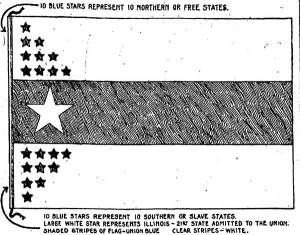
The poet also applied his skills to produce a banner for the city of Chicago, a municipal flag that has been voted the second best in the nation (topped only by Washington, D.C.). Rice opted for simplicity in design: a white cloth with two horizontal blue stripes containing two six-sided stars.
According to the Chicago Public Library, the simplicity concealed much complexity. “The top blue stripe represents Lake Michigan and the North Branch of the Chicago River,” the library explains. “The bottom Blue Stripe represents the South Branch of the Chicago River and the Great Canal.”
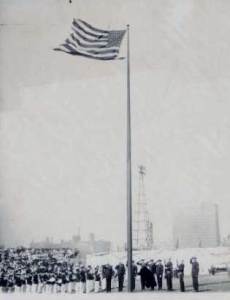
The original two stars later expanded to four, which represent Fort Dearborn, the 1871 Chicago fire, the Columbian Exposition of 1893 and the Century of Progress Expo in 1933. Rice said he used six-sided stars because “five-point stars are the symbols of states and…have no place in a municipal flag.”
Chicago’s fascination with flags extends to Soldier Field, where everything from prize fights to religious revivals have been held. It’s also the long-time home of the Chicago Bears football team. Named in honor of World War I veterans from Chicago, the stadium hosts an American Flag Program to allow fans to honor someone by having Old Glory lifted in the park.

The connection of the field to flags reaches all the way back to its dedication in November 1926, when a parade preceded the opening Army-Navy game. “Down Michigan avenue and into the stadium,” one newspaper wrote, three American Legion drum corps marched in “a pageant picturing the evolution of the American flag, with marchers in period costume.”
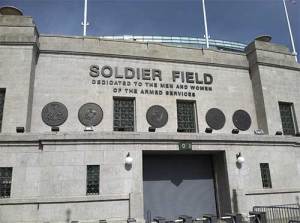
Another paper told how “Chicago bloomed with flags [and] bunting” as the opening approached. Behind the pageant marchers came “service men from every allied nation in the World war, bearing the banners of their native lands.”
(For information about the American Flag Program, go to http://www.soldierfield.net/content/american-flag-program.)
